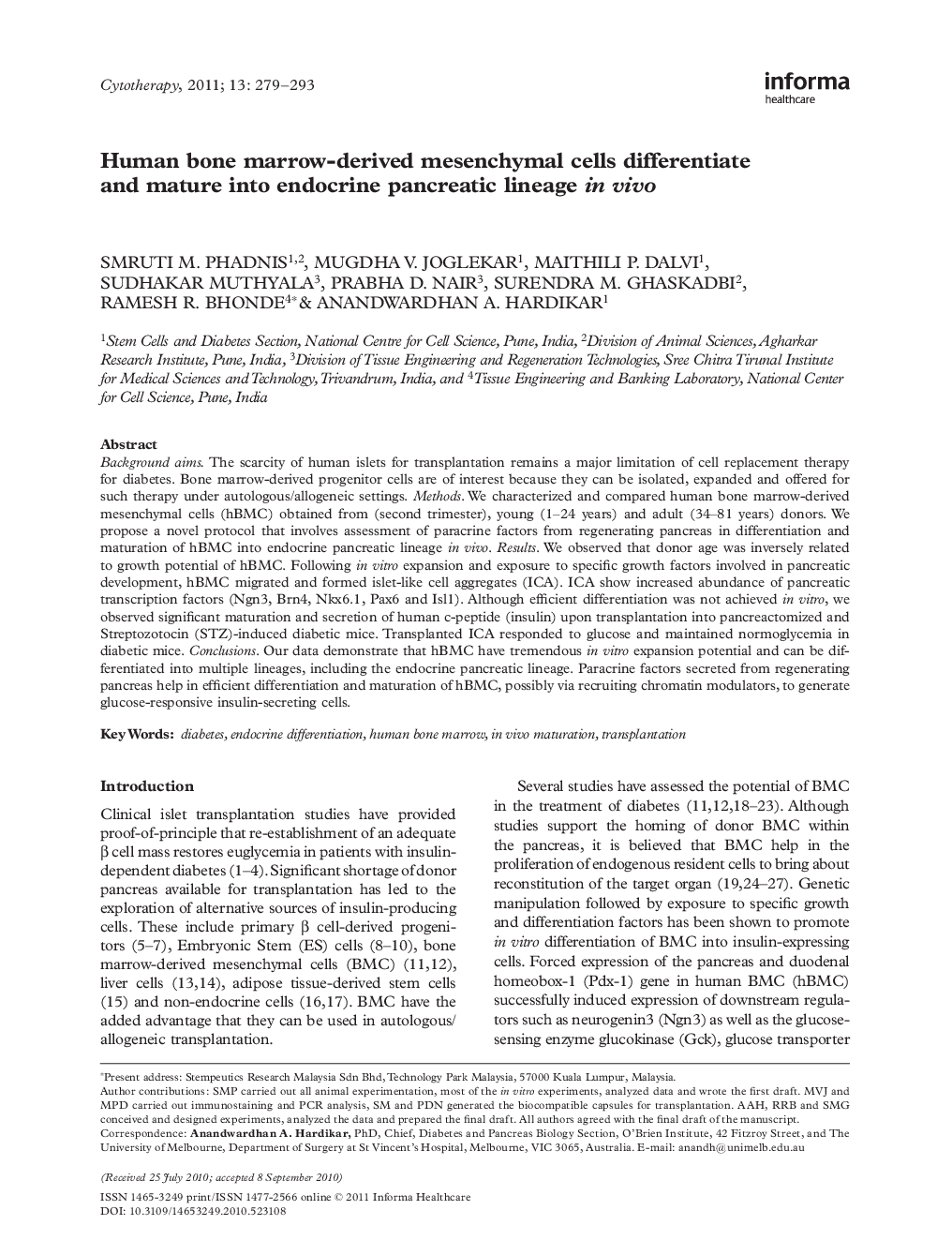| Article ID | Journal | Published Year | Pages | File Type |
|---|---|---|---|---|
| 2172055 | Cytotherapy | 2011 | 15 Pages |
Background aimsThe scarcity of human islets for transplantation remains a major limitation of cell replacement therapy for diabetes. Bone marrow-derived progenitor cells are of interest because they can be isolated, expanded and offered for such therapy under autologous/allogeneic settings.MethodsWe characterized and compared human bone marrow-derived mesenchymal cells (hBMC) obtained from (second trimester), young (1–24 years) and adult (34–81 years) donors. We propose a novel protocol that involves assessment of paracrine factors from regenerating pancreas in differentiation and maturation of hBMC into endocrine pancreatic lineage in vivo.ResultsWe observed that donor age was inversely related to growth potential of hBMC. Following in vitro expansion and exposure to specific growth factors involved in pancreatic development, hBMC migrated and formed islet-like cell aggregates (ICA). ICA show increased abundance of pancreatic transcription factors (Ngn3, Brn4, Nkx6.1, Pax6 and Isl1). Although efficient differentiation was not achieved in vitro, we observed significant maturation and secretion of human c-peptide (insulin) upon transplantation into pancreactomized and Streptozotocin (STZ)-induced diabetic mice. Transplanted ICA responded to glucose and maintained normoglycemia in diabetic mice.ConclusionsOur data demonstrate that hBMC have tremendous in vitro expansion potential and can be differentiated into multiple lineages, including the endocrine pancreatic lineage. Paracrine factors secreted from regenerating pancreas help in efficient differentiation and maturation of hBMC, possibly via recruiting chromatin modulators, to generate glucose-responsive insulin-secreting cells.
